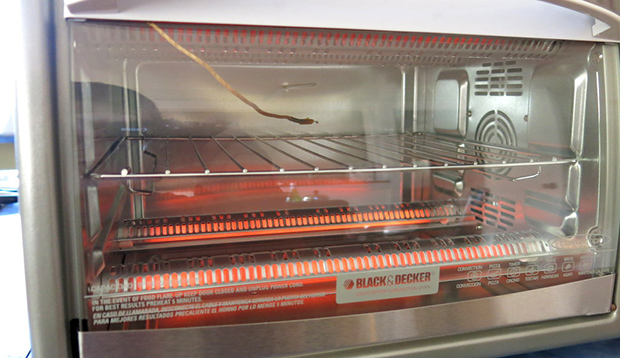For some reason or another, the Hackaday tip line sometimes sees a short burst of submissions for the same project. The latest one of these was for toaster oven reflow stations. They’re both great builds and different approaches to making a useful tool out of home appliances.
First up is [Richard]’s build. he ended up with a fairly high-end build using a Rocket Scream Reflow Oven Controller Arduino shield. This shield accepts a normal K-type thermocouple and controls an external solid state relay with the Arduino’s PID library. [Richard]’s build has a few neat additions – a properly dremeled enclosure, computer fan, and a welding blanket for insulation. Now that we think about it, it’s odd we’ve rarely seen any sort of insulation in these reflow oven builds.
Next up is [Ray]’s version of a Black & Decker reflow oven. While not as fancy as [Richard]’s build, this one does have a few features that make it very interesting. Instead of messing around with thermocouples, [Ray] simply took a digital kitchen thermometer – a neat tool that already a thermistor in a compact metal probe – and read the analog value with an Arduino. To control the power, [Ray] is using a cheap 433 MHz radio transmitter to control a few remotely operated power sockets. It’s a very clever and inexpensive replacement for a SSR, especially since [Ray] had these power sockets just lying around.
So there you go. The same tool, built two different ways. A great demonstration of how you can not only build anything, but you can build anything any way you want.
















Cool…
How do you like your Hot Dog’s?
uhh, extra-crispy?
First one is just a video. If someone doesn’t respect the audeince enough to type something why do they get more than a passing comment in a HaD links post?
In fairness, if you click the “Show More” under the video, you will see a fair bit of text that was typed.
“this one does have a few interesting features that make it very interesting”… Before posting, I suggest having someone (anyone at all) read the draft article to spot editorial mishaps such as this.
I find it quite tedious to see pointless commentary about grammar, punctuation, etc. These inevitable errors do not affect the inter-cranial data transfer process because we are ALL (not just you) equipped with error detection capabilities.
Nope, I have error rejecting capabilities. I just skip over those errors.
I find it quit tedious to see pointless commentary about how pointless “commentary about grammar, punctuation, etc.” is…
an arduino shield specifically for a toaster oven?
now i’ve heard everything!
toastyduino?
I don’t think isolating a toaster oven would be a good idea if you’re using it as a reflow oven. There are no benefits if you try to follow your solder temperatur profil. Usually they are allready fast enough and easily reach the recommended solder temperature. One of the benefits of these toaster ovens is their low thermal mass and high heating power. By opening the front door a little it is easy to maintain the recommended cooling rate. If you islolate the chamber a quite effective way of temperature sinking is blocked. Opening the door fully may lead to a thermal shock and cracks.
Having done some experiments on reflow process control with my own toaster oven I found it following the recommended lead free solder profile quite well without any modifications. What turned out to be extremely important for process control is the placement of the thermocouple. Having it hanging in mid air lead to much lower temperatures (~60K) then placing it on a patch of pcb.
Wouldn’t a Relay work just as well as an RF controlled outlet?
It addresses that in the text:
A) It mentions replacing a SSR (so answering your exact question with a yes)
and
b) He already had some available (answering the implied why)